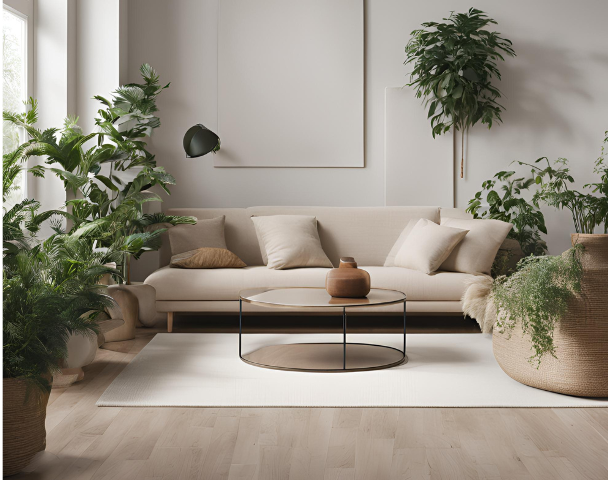10 Budget-Friendly Minimalist Room Decor Ideas You Can Try Today
Why Minimalist Decor Works
Minimalist room decor is more than just a design trend; it’s a lifestyle choice that emphasizes simplicity and functionality. By focusing on clean lines, open spaces, and intentional design, minimalism creates a calming environment while reducing visual clutter. This approach is especially effective for smaller rooms, as it helps maximize space and makes your home feel more open and inviting.
Budget-Friendly and Stylish
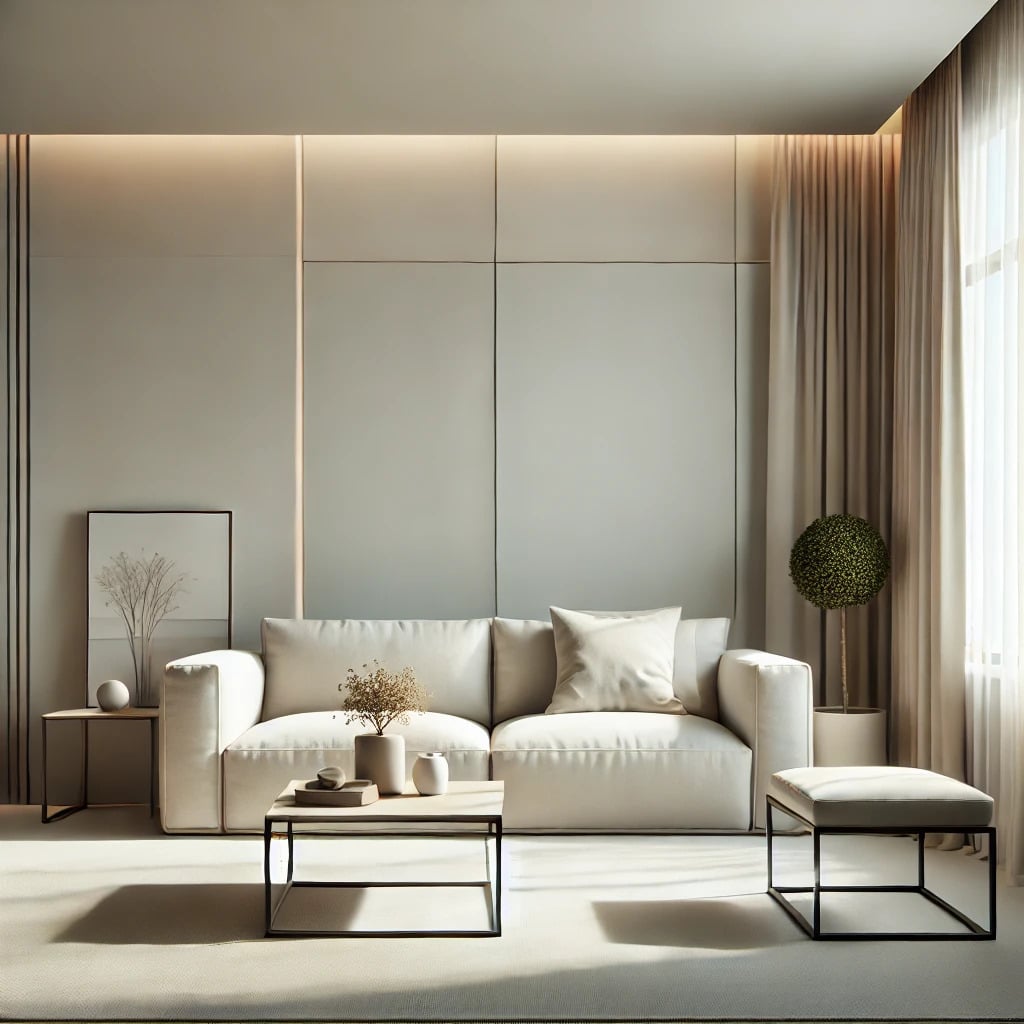
Contrary to popular belief, achieving a minimalist look doesn’t have to be expensive. With a little creativity, you can transform your space using affordable or even free resources. Whether it’s repurposing items you already own, adding small accents, or implementing simple DIY projects, the possibilities are endless. The ideas in this article will help you achieve a stunning minimalist aesthetic without overspending.
- Briefly introduce the concept of minimalist room decor.
- Emphasize that these ideas are both stylish and budget-friendly.
- Highlight how these tips can be implemented easily and quickly.
1. Add Indoor Plants for a Fresh Touch
When it comes to minimalist decor, indoor plants are a simple and budget-friendly way to breathe life into your space. A touch of greenery can instantly make a room feel fresh, vibrant, and inviting. Unlike other decorative items that can clutter a room, plants blend seamlessly with minimalist aesthetics, adding both beauty and function. They also bring a sense of calm, which aligns perfectly with the minimalist philosophy of creating tranquil and uncluttered spaces.
Choose Low-Maintenance Options
For those new to indoor gardening, start with low-maintenance plants that thrive in various conditions. Succulents, snake plants, and pothos are great examples that require minimal care and are widely available at affordable prices. These plants can thrive with infrequent watering and adapt well to indoor environments, making them perfect for busy individuals. Additionally, small potted plants are often sold for less than $5 at local markets or gardening stores, allowing you to decorate on a tight budget.
Propagate and Save
If you want to save even more, propagation is a great option. Many indoor plants, like pothos or spider plants, can be propagated by cutting and growing new plants from existing ones. Ask friends or family for plant cuttings, or explore community groups where plant lovers share clippings for free. With just a little water, patience, and a container you already have, you can grow your collection without spending a dime.
Creative Placement Ideas
Where you place your plants can make a big difference in your room’s overall look. Consider adding plants on windowsills to maximize natural light or placing them on floating shelves for a clean, modern appearance. Hanging planters are another fantastic option, creating vertical interest without taking up valuable floor space. For a truly minimalist look, opt for sleek, neutral-colored pots that complement your room’s color scheme.
Not only do plants enhance the visual appeal of a room, but they also improve air quality. Certain plants, such as peace lilies or rubber plants, are known for their air-purifying properties. By introducing greenery, you not only elevate your room’s aesthetic but also create a healthier living environment. The combination of form and function makes indoor plants a must-have in minimalist spaces.
Embracing indoor plants is a great way to decorate with minimal investment. Whether you buy affordable options, propagate your own, or repurpose containers as planters, there are countless ways to add a natural, budget-friendly touch to your room. Let your creativity bloom and watch your space transform into a serene, green retreat.
- Benefits of greenery in a minimalist room.
- Examples of low-maintenance plants (e.g., succulents, snake plants).
- Budget-friendly options like propagating plants or buying small pots.
2. Declutter and Simplify
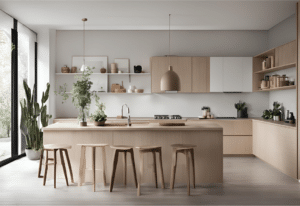
The Importance of Decluttering
One of the key principles of minimalist decor is embracing simplicity, and decluttering is the first step toward achieving that. A clutter-free environment not only enhances the aesthetic appeal of your room but also creates a sense of calm and order. Removing unnecessary items allows the true beauty of your space to shine through, giving each piece of furniture and decor more room to breathe. Whether it’s clearing off countertops or organizing shelves, a tidy room will feel instantly more spacious and peaceful.
How to Decide What to Keep
The process of decluttering can feel overwhelming, but it’s easier if you focus on items that truly serve a purpose or bring you joy. Start by evaluating each item in the room: Is it functional? Does it add to the overall aesthetic? If something feels out of place or hasn’t been used in months, consider donating or selling it. Minimalism encourages keeping only what you need, so eliminate the excess and retain what truly adds value to your space.
Practical Tips for Simplifying Your Space
Once you’ve decluttered, think about ways to simplify your space. Use storage solutions like baskets, boxes, or hidden compartments to keep everyday items out of sight. Consider arranging your furniture to maintain open flow, ensuring that every piece in the room serves a functional purpose. Remember, less is more in a minimalist setting. By keeping your space organized and thoughtfully curated, you’ll create a tranquil atmosphere that feels much larger and more inviting.
- Discuss the importance of decluttering for minimalism.
- Provide tips for sorting items (e.g., donate, sell, or repurpose).
- Focus on how less is more when it comes to room decor.
3. Rearrange Your Furniture
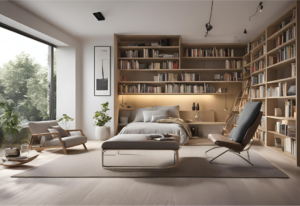
Maximizing Space with Smart Layouts
Rearranging your furniture can completely transform the look and feel of a room, and it’s a cost-free way to make the most of your space. In a minimalist room, the goal is to keep things open and uncluttered, which means you should focus on layouts that create flow and openness. Experiment with different arrangements to find what feels best. For example, pulling furniture away from the walls can create a more balanced, inviting space that doesn’t feel cramped.
Focusing on Functionality
When rearranging, always consider the function of the space. A minimalist room emphasizes the utility of each piece, so make sure your furniture placement serves both form and function. In a living room, place seating in a way that promotes conversation, while in a bedroom, ensure the bed is the focal point without overcrowding the space with unnecessary furniture. Functional furniture placement not only creates a practical layout but also enhances the minimalist atmosphere of your room.
Creating Zones and Open Spaces
Even in small rooms, creating distinct zones through furniture placement is a smart way to enhance functionality and visual interest. For instance, in a studio apartment or small living room, use furniture to divide the space into sections for different activities—such as a cozy reading nook or a small office area. This can be done simply by positioning a couch or bookshelf as a room divider. The key is to maintain an open flow, allowing the room to feel spacious and organized while still serving multiple purposes.
- Explain how reconfiguring furniture can give a fresh look without spending a dime.
- Tips for creating open and balanced layouts in small spaces.
4. Use DIY Wall Art
Personalize Your Space with Low-Cost Creations
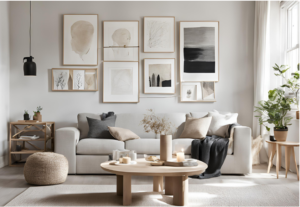
Creating your own wall art is a perfect way to add a personal touch to your minimalist room without spending a lot of money. DIY projects, such as simple abstract paintings, geometric designs, or even framed fabric, can elevate your space and reflect your unique style. This approach allows you to customize the colors, themes, and size of the artwork, ensuring that it fits perfectly within your room’s decor.
Take Advantage of Free Printables
Another budget-friendly solution is to use free printables available online. Many websites offer downloadable art in minimalist styles, including quotes, black-and-white photography, or abstract designs. Simply print them out, pop them in inexpensive frames, and you have a stylish wall piece without spending a dime. This approach allows you to easily switch out your wall art to keep things fresh and exciting.
- Introduce simple DIY ideas (e.g., abstract art, framed fabric, or free printables).
- Mention affordable materials like canvas, old frames, or recycled items.
5. Incorporate Neutral Colors
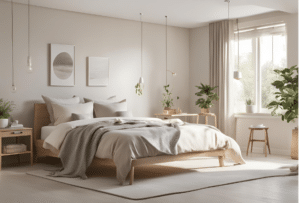
Creating a Calming Atmosphere
Neutral colors are a key component of minimalist decor, as they help create a calm and serene environment. Shades like white, beige, gray, and soft pastels provide a clean backdrop that enhances the simplicity of a room. By using neutral tones for walls, furniture, and accessories, you can create a cohesive and timeless look that feels open and uncluttered. These colors work well in every room, from the bedroom to the living room, and are versatile enough to pair with any decor style.
Maximizing Light and Space
Another advantage of neutral colors is their ability to maximize light and make a room feel more spacious. Lighter shades reflect natural light, which can make even the smallest spaces appear larger and more airy. By choosing neutral tones for your walls, flooring, and furniture, you create an illusion of space while keeping the overall design understated and elegant.
- The impact of neutral tones on minimalist aesthetics.
- Suggest using existing items (e.g., neutral pillowcases, bedsheets).
6. Repurpose Items You Already Own
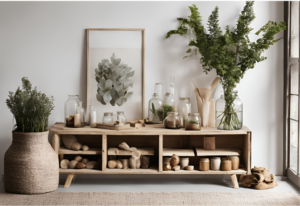
Repurposing items you already have is an excellent way to stay within budget while decorating your minimalist space. Instead of purchasing new decor, look around your home for items that can be transformed into something functional and stylish. For example, an old wooden crate can be turned into a chic side table, or glass jars can be used as decorative vases. Repurposing not only saves money but also adds a personal and creative touch to your room, helping you maintain a minimalist yet unique aesthetic.
- Ideas for repurposing old items (e.g., turning jars into vases or crates into shelves).
- Showcase creativity while sticking to a zero-budget approach.
7. Create Visual Interest with Textures
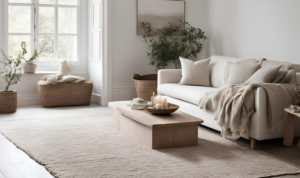
Adding textures to your minimalist space is a simple yet effective way to create depth and warmth without cluttering the room. By incorporating different materials, such as a soft wool rug, linen cushions, or a cotton throw, you can create a cozy and inviting atmosphere. Stick to neutral tones to maintain a minimalist feel, but don’t be afraid to experiment with varying textures to keep the space visually interesting and comfortable. This subtle approach adds layers to your decor without overwhelming the simplicity of the design.
- Add depth with textured items (e.g., rugs, blankets, or cushions).
- Focus on mixing textures you already have at home.
8. Optimize Lighting for a Minimalist Look
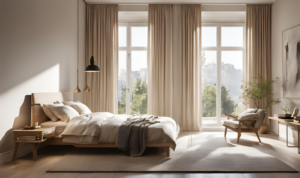
Lighting plays a crucial role in creating a minimalist atmosphere, as it can enhance the space without adding visual clutter. Maximize natural light by keeping windows unobstructed and using light-colored curtains that allow sunlight to flood the room. For artificial lighting, choose sleek, simple fixtures like pendant lights or floor lamps that complement the minimalist style. Well-placed lighting can make the room feel more open, inviting, and airy, while creating a warm, cozy ambiance.
- How natural light enhances a minimalist space.
- Tips for arranging furniture to maximize light or using existing lamps strategically.
9. Use Floating Shelves or Hidden Storage
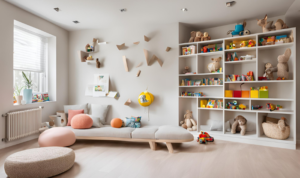
Floating shelves are a great way to maintain a minimalist look while adding storage space without cluttering the room. By mounting shelves on the wall, you free up floor space and keep your room feeling open and organized. You can use them to display a few carefully chosen items or store everyday essentials in an aesthetically pleasing way. For an even cleaner look, consider hidden storage options like storage ottomans or under-bed drawers to keep the room tidy and functional while sticking to the minimalist ethos.
- The advantages of shelves for a clean, organized look.
- Mention alternatives like stacked crates or existing furniture as storage.
10. Personalize with Minimal Decor
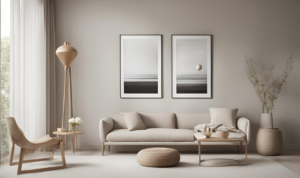
Personalizing your minimalist space doesn’t mean filling it with excessive decor; instead, focus on a few meaningful pieces that reflect your personality. A framed photo, a small sculpture, or a sentimental item can serve as a focal point without overwhelming the room. By keeping decor simple and intentional, you create a space that feels uniquely yours while maintaining the clean, uncluttered aesthetic of minimalism.
- Suggest using sentimental or meaningful items (e.g., framed photos, heirlooms).
- Emphasize keeping it simple to maintain the minimalist theme.
Conclusion
Embrace Simplicity for a Beautiful Transformation
Transforming your room into a minimalist sanctuary doesn’t require a hefty budget or major renovations. By embracing simple, budget-friendly changes like decluttering, using DIY decor, and incorporating neutral colors, you can create a space that feels spacious, serene, and visually appealing. Minimalism isn’t about having less for the sake of it; it’s about making intentional choices that align with your lifestyle and aesthetic.
Start Small, See Big Results
You don’t have to revamp your entire room in one go. Start by implementing just one or two of these ideas, such as adding a plant or reorganizing your furniture. As you gradually simplify your space, you’ll begin to see how small changes can make a big impact on the overall feel of the room. The beauty of minimalist decor lies in its ability to evolve over time, allowing you to create a space that feels both timeless and personal.
Make Your Space Your Own
The best part about minimalist decor is that it’s customizable to your tastes. Whether you’re drawn to clean lines, neutral tones, or a few carefully selected personal items, minimalism allows you to express yourself in a simple yet impactful way. With these budget-friendly ideas, you can achieve a stylish and functional space that reflects who you are while keeping things beautiful and clutter-free.
FAQ Corner
1. What are the key principles of minimalist room decor?
Minimalist room decor focuses on simplicity, functionality, and clean lines. It emphasizes creating a clutter-free space by reducing excess furniture and decor, using neutral colors, and ensuring that each item has a purpose. The goal is to create an open, calm, and balanced environment.
2. How can I decorate my room on a budget with a minimalist approach?
You can decorate on a budget by focusing on repurposing items you already own, opting for DIY projects like homemade wall art, and choosing affordable furniture pieces that fit your space. Neutral colors and small, thoughtful accents like plants or handmade decor can elevate your room without breaking the bank.
3. Can minimalist decor work in small rooms?
Absolutely! Minimalist decor is perfect for small spaces as it helps maximize the available space and prevents the room from feeling overcrowded. By using multifunctional furniture, light colors, and smart storage solutions, you can make a small room feel larger and more open.
4. How do I add personality to a minimalist room without cluttering it?
To add personality, incorporate a few personal items that are meaningful, like framed photos, a unique sculpture, or a colorful throw pillow. The key is to keep these additions subtle and intentional so they don’t overwhelm the room’s overall simplicity.
5. Are indoor plants essential for minimalist decor?
While not essential, indoor plants are a popular and effective way to add life and freshness to a minimalist space. They bring a natural element that complements the clean and simple lines of minimalism, and many plants are low-maintenance and affordable.
